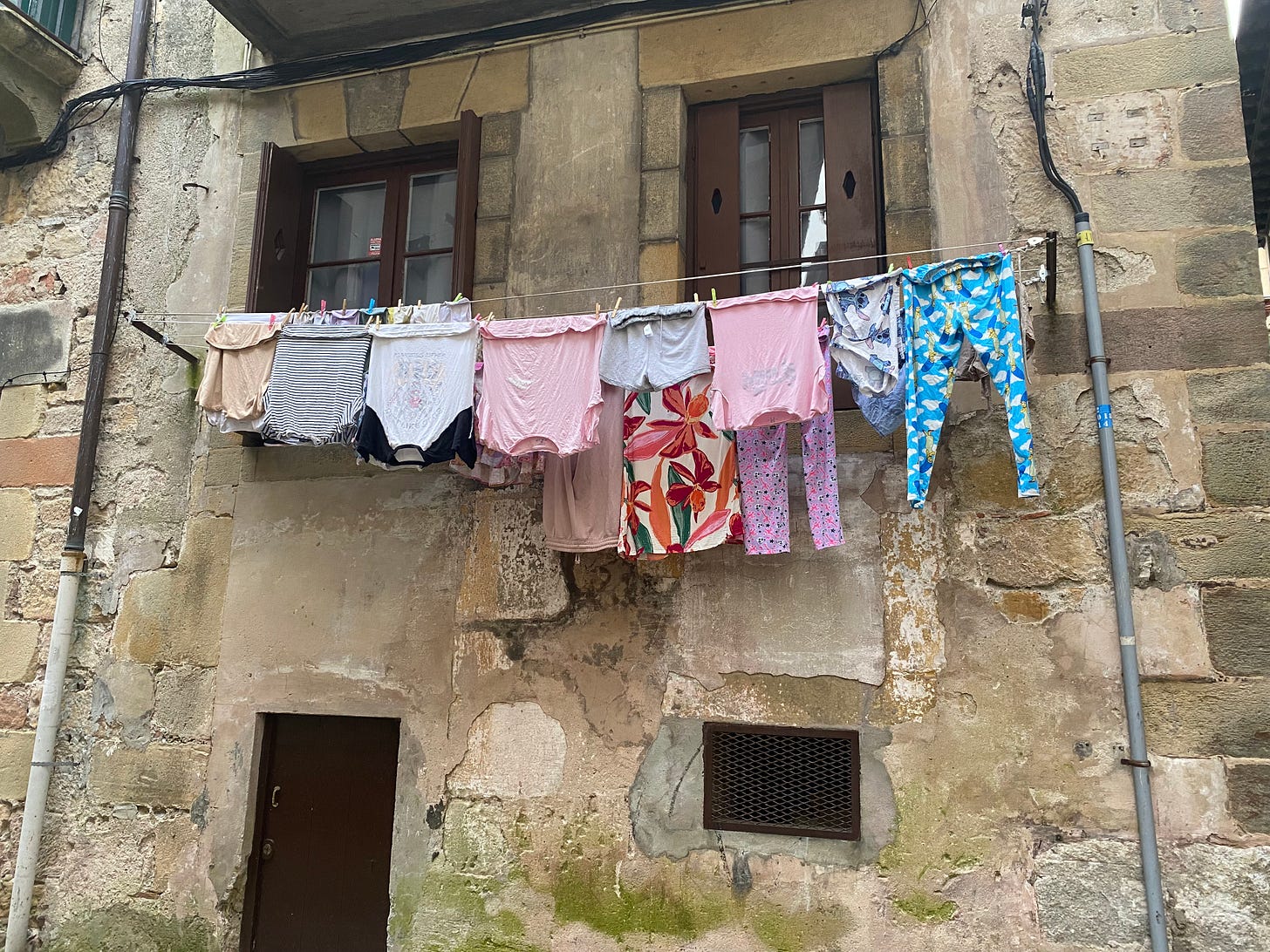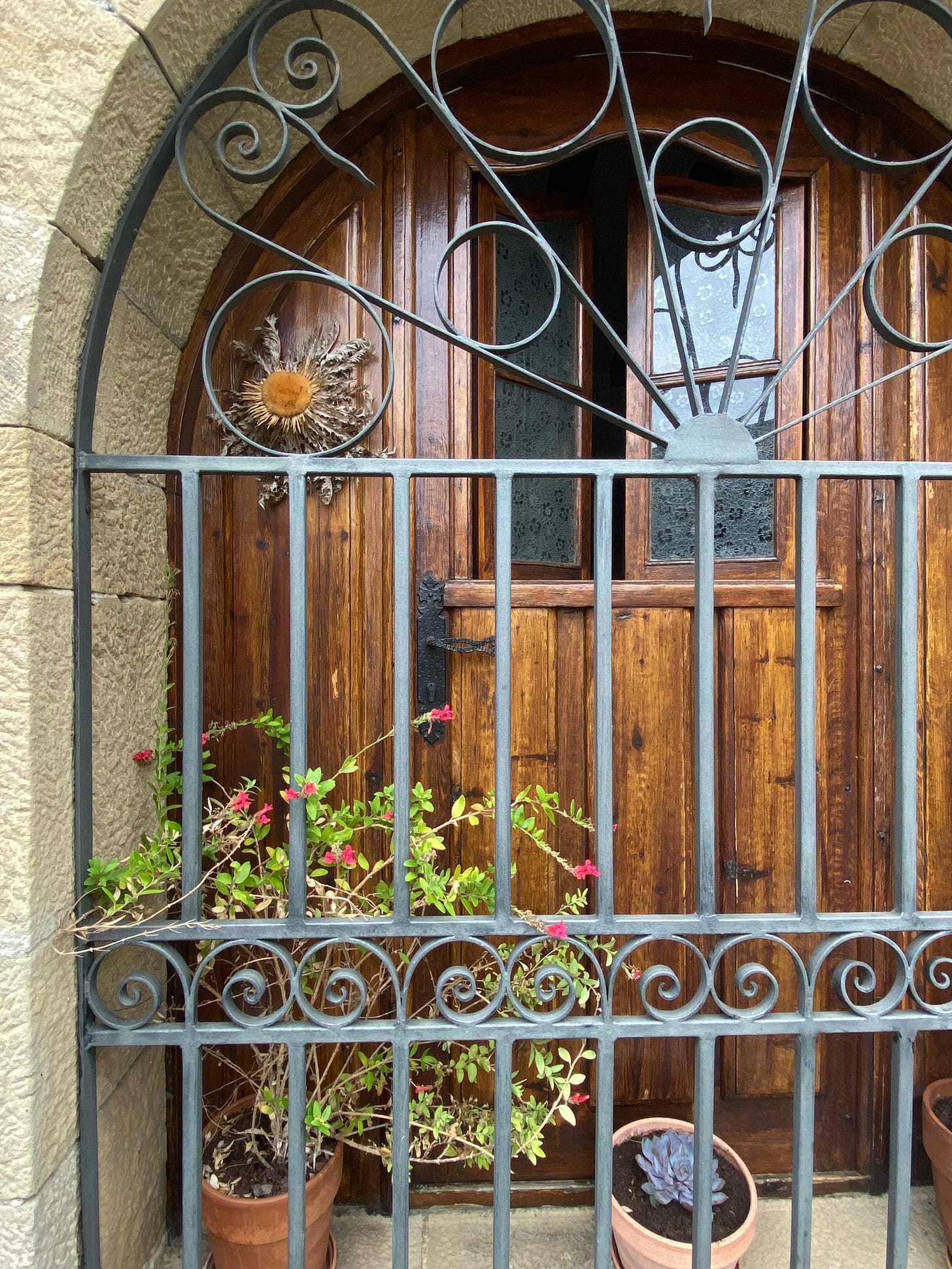After the softly glowing colours of the Pyrenées mountains and their planes, we’ve moved to the coast and crossed over to Spain. We’re living on the border between two countries- the Chingudy bay- with the French town of Hendaye on one side and the Spanish village of Hondarribia on the other.
Hondarribia (Fonterrabie in French) is sometimes named the most colourful fishing village in the world. The outside palette has completely changed: here the white washed houses with their red, green and blue (and in one case- pink) woodwork structures stand against the bright blue sky and dominate the azure ocean.
The old town with its cobblestone streets and the citadel are situated on top of the hill. It was this strategic position, dominating the entry into the bay, that encouraged a development of a settlement here in the Xth century. Later on, these same towers hosted the whale watchers who would send a signal to the fishermen when one of the magnificent creatures entered the bay.
In the old town the streets are narrow and the houses display the bright colours on their balconies and window shutters, complete with lines of drying laundry. Plants with green and purple stems bloom in all kinds of containers. Sometimes they are large and colourful ceramic ones, but often simple pots are painted or decorated with seashells and bits of glass. Folds of drying laundry soften the facades, creating an unique pattern each time, depending on what was washed in each household.
The traditional Basque house is known as an "Etxea" or "Baserri" if it’s on a farm. Stone and wood complement each other here as they do in churches. The wooden structures are built with the oaks that come from the region. There is a strong feeling of each house being rooted in its place of origin. This is true I suppose of most of the old houses. However for the Basques the attachment to their family house is particularly deep.
In the old Basque legends for example, the events often take place in a specific location, sometimes the house being mentioned by name. This is unusual of the genre that doesn’t, as a rule indicate neither the place, nor the time frame for the action. The family house was also the place where Basques were able to keep their language alive among each other, in secrecy, during the totalitarian dictatorship of Franco. The Basque house is kept in the family, preserved as much as possible.
Hondarribia is a town dancing on top of the whale. Maybe because of their wooden structure, the bright colours, maybe even because of the laundry festooning their façades– the houses seem light. The buildings stretch towards the sky whilst on the ground the narrow streets flow like ribbons. There is movement everywhere, a gentle swaying: it’s in the breeze, the come and go of the waves, the slow movement of drying laundry. Babies are happy here and old ladies very elegant. Many of the doors are decorated with a dried thistle flower. It is believed to protect the house from the mischievous spirits, the laminak , who come out at night. They mistake the flower for the sun and run off to hide from the daylight.
I’ve walked the streets of the town in the early mornings when the light is soft and slightly pink and in the afternoons when the sun glares onto the city’s square…The narrow cobbled streets are protected from the sunlight at all times. When one looks up only a sliver of a bright blue sky is visible. A breeze from the ocean blows through the shady streets, it brings salt and moisture that settle inside of the houses. The ocean progressively permeating the town and the buildings in a continuous come and go relationship with its human inhabitants. Maybe, one day, Hondarribia will slowly and magically disappear in the salty air, the bright colours of its houses becoming one with the misty rainbow. Maybe the oak structures of the houses will transform themselves into colourful boats, taking the happy babies, their parents and the elegant old ladies still holding their coffee cups to a different place, where the vegetation is as green and luscious and the waves rise against the pale rocks. Only the laminak will stay- playing in the waves at night and napping during the day. Maybe…but before that happens, please, come and visit.








I live (and love) the colours in your photographs and in your writing. I especially picked up on the theme of movement here as it is key for me at the moment.
I absolutely love seeing your posts with their evocative descriptions and gorgeous photography! One really gets the feeling of being in the place you are writing about!